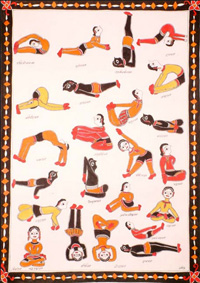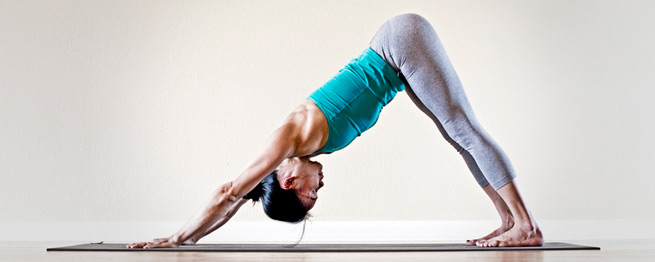 A good yoga mat does not always come cheap, but on the upside it will last for years
A good yoga mat does not always come cheap, but on the upside it will last for years
I won’t go and tell you comforting little lies of the “get your yoga mat on the chap side” type. That is because I own a cupboard-full of “yoga mats on the cheap side” which are (you’ve guessed it) unusable for yoga. They either make the Downward Facing Dog a slippery affair, or they bunch up during Chaturanga, or they simply start falling apart after a few weeks.
So, resign yourself to the idea of paying more than you meant to for your new yoga mat and join me in the exploration of this area. Oh, and there’s a consolation too: if you choose your yoga mat well, it will last for years, even with frequent use.
What to look for
Call it non-slip, non-skid or sticky, it amounts to the same thing. Your yoga mat must not budge as you perform leaps and your hands and feet must not slip as you salute the sun. The ideal mat should not go and glue itself to your body parts either; a tiny bit of slide is desirable in certain poses, like shoulder stands.
Material-wise, it may be difficult to avoid mats made out of PVC, but at least try to is give a miss to the mats that give off an obviously chemical smell. More earth-friendly options include rubber (which might present a problem to people allergic to latex), jute or cotton. If you opt to stay away from the traditional sticky PVC mats, you will probably want to go for more texturised patterns for a better grip.
As to size, a 182 x 60cm mat will suffice for most yogis. It is usually best to go with a 4 to 5mm thick mat. If it’s too thin, you might as well be doing yoga on the hardwood floor; if it’s too thick and foamy, you could sink or feel unstable.
Oh, yes. You’ll also know your good yoga mat by the way the corners do not curl up, not even when you first unroll it.
How to clean it
There’s nothing worse that a grimy yoga mat. The rule number one of the yoga mat hygiene is: approach it with clean feet and hands. (After all, your face will land where your hands and feet used to be.)
Of course, form time to time, you will need to get down to it and do some cleaning.
A lightly soiled mat can be cleaned by rubbing it cloth or sponge dipped in water and a little dish soap. Very dirty mats need to be soaked in a bath tub; use warm water and mild detergent. Some yoga mat manufacturers recommend machine wash, others strictly forbid it (so, read the care instructions).
In between washing, you may want to sanitize your yoga mat with a natural disinfectant that you made yourself with essential oils: put one cup (250ml) of water, 4 drops of lavender, 3 drops of tea-tree oil and 3 drops of grapefruit seed extract into a spray bottle, shake well and spray your mat lightly after a session.
Always rinse the mat with clean water and leave out to air-dry completely before rolling it.
What to do with old yoga mats
Try to avoid just throwing them into the bin. I put my old yoga mat under sleeping bag when camping. They are also better than towels for lying on when basking on a beach. Some people re-purpose them as linings for pet crates, or as coasters. If you need more ideas, just search the internet! (I especially liked this one: wrap your old yoga mat around that attic beam you keep bumping into.)











